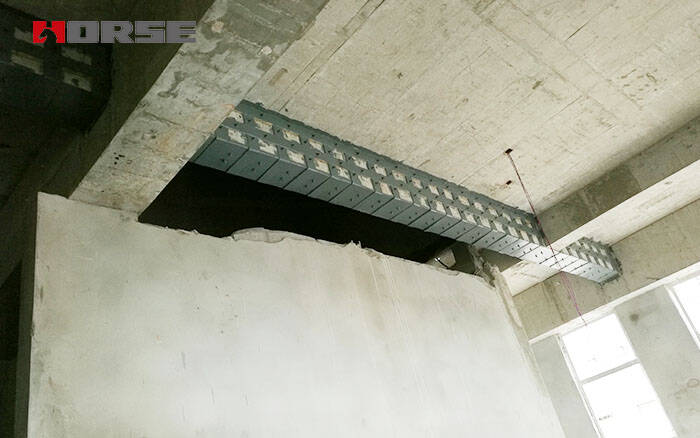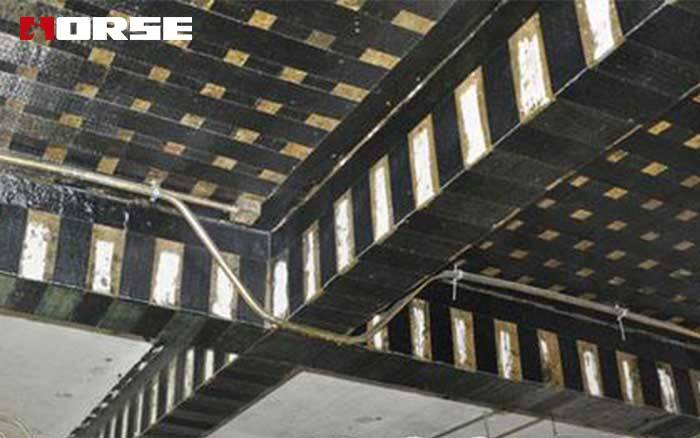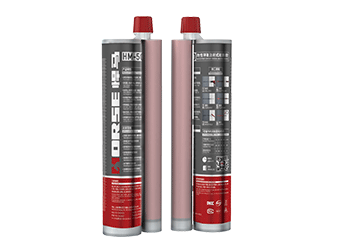Solutions
Horse Construction offers full range of structural strengthening materials with technical supports, documentation supports, products supports, project supports.
Seismic Reinforcement Of Old Residential Quarters

Structure type and construction method of old community
Residential buildings in old residential quarters are mostly masonry structures, which have large mass and rigidity, absorb more seismic energy, low mortar strength, poor seismic resistance and ductility, and low tensile, flexural and shear resistance of materials. It is easy to crack and collapse under the action of strong earthquake, and the damage rate is high.
Existing problems in seismic reinforcement and reconstruction of old residential quarters
(1) The transformation method is single and affects residents' lives
The conventional method is to arrange reinforced concrete on both sides, and the construction of the inner and inner walls of the outer wall affects the normal life and work of the owner. At the same time, the conventional method needs to penetrate the wall and perforate the slab to lay out the steel bars, and the construction noise is loud, causing secondary damage to the wall and the indoor floor, and the process is many and the construction period is long.
(2) Huge investment in renovation and low residents’ sense of gain
Earthquake-resistant reinforcement has a relatively large investment in the transformation of old communities, about 1,500 yuan per square meter. Combined with value engineering theory, its value index is not high, residents' sense of gain is not strong, and satisfaction is low. The conventional technology has a thicker surface layer, which will occupy more of the original building area after wall reinforcement, which will affect the subsequent use of the owner.
(3) Lack of exploration and innovation of new technologies and new materials
Since the seismic reinforcement and reconstruction of old communities have a greater impact on the lives of residents, the applicability of conventional seismic reinforcement technology has certain limitations. Only by exploring new technologies, new processes, and new materials can we solve and break through. However, due to the lack of data accumulation, project experience, and weak stability in the application of new technologies, new processes, and new materials, technological innovation in seismic reinforcement of old communities has been slow in practice. At the same time, the formulation and renewal of national standards and industrial standards also give insufficient consideration to the characteristics of seismic reinforcement of old communities.

Conventional Schemes and Problems of Seismic Reinforcement and Reinforcement of Old Residential Districts
1) Reinforcement technology of reinforced concrete slab wall
Reinforced concrete slab wall reinforcement is currently the most commonly used method for brick masonry construction. That is, the cast-in-place reinforced concrete composite layer is set on one or both sides of the original wall to form a composite wall, which improves the bearing capacity and shear deformation resistance of the wall, and the reinforcement effect is obvious. It is usually necessary to strengthen the foundation and increase the cross-section of the structure, occupying the indoor space of the house, planting bars may damage the circuit, and the plumbing system also needs to be disassembled, increasing the overall cost.
2) Carbon fiber cloth reinforcement technology
Carbon fiber cloth reinforcement technology uses structural adhesive to stick carbon fiber cloth on the base of the wall. The carbon fiber material is light in weight, and used to reinforce the masonry structure will not increase the load on the building. Carbon fiber cloth has a small thickness, does not occupy indoor space, and has little impact on the existing water supply and drainage network and circuit system.
You can find anything here you are in need of, have a trust trying on these products, you will find the big difference after that.

High strength, unidirectional carbon fiber wrap pre-saturated to form a carbon fiber reinforced polymer (CFRP) wrap used to strengthen structural concrete elements.

High strength carbon fiber reinforced polymer (CFRP) strip / laminate / plate for structural strengthening and concrete repair

two-components modified epoxy resin adhesive, with high quality plastic tube, double cartridge package